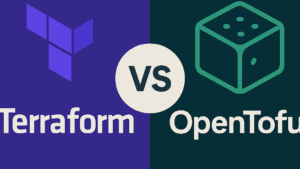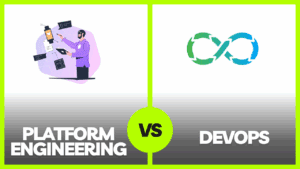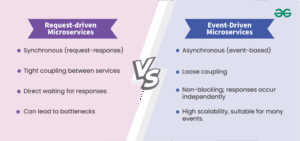Today, we bring you a comprehensive guide on Scalable Azure Infrastructure as Code, filled with expert tips from SlickFinch. Designed to provide you with a deeper understanding of this topic, our article aims to equip you with the knowledge and tools necessary to effectively implement Azure infrastructure as code in a scalable manner. As experts in this field, SlickFinch is here to assist you every step of the way. So, if you find yourself in need of any assistance or guidance on this matter, don’t hesitate to reach out to us.

Overview of Azure Infrastructure as Code
What is Infrastructure as Code?
Infrastructure as Code refers to the practice of managing and provisioning technology infrastructure through code, utilizing version control and automation. Instead of manually configuring and managing infrastructure resources, infrastructure as code enables organizations to define and automate the deployment and management of infrastructure using code and templates.
Why use Azure for Infrastructure as Code?
Azure, Microsoft’s cloud computing platform, provides a comprehensive set of services and tools that make it an ideal choice for implementing infrastructure as code. Azure offers a wide range of scalable and flexible services that enable organizations to quickly provision and manage infrastructure resources. Additionally, Azure has built-in support for infrastructure as code through services like Azure Resource Manager (ARM) and Terraform, making it easy to adopt and integrate this approach into your workflows.
Benefits of Scalable Azure Infrastructure as Code
Implementing scalable Azure infrastructure as code brings several benefits to organizations. Firstly, it enables greater agility by allowing for the rapid deployment and provisioning of resources, reducing the time and effort required for manual configuration. This agility is particularly beneficial in scenarios where infrastructure needs to be dynamically adjusted to meet changing business requirements.
Furthermore, infrastructure as code provides a consistent and repeatable approach to infrastructure management. By defining infrastructure in code, organizations can version control their infrastructure definitions, enabling easy collaboration and sharing across teams. This also facilitates the ability to reproduce and recreate infrastructure environments, reducing the risk of configuration errors and enhancing overall system security and stability.
Lastly, by leveraging infrastructure as code, organizations can achieve improved scalability and resource optimization. With the ability to programmatically define resource configurations, organizations can easily scale their infrastructure up or down based on demand. This ensures efficient resource allocation and cost optimization, as resources are provisioned and deprovisioned as needed.
Getting Started with Scalable Azure Infrastructure as Code
Choosing the Right Azure Services
Before diving into infrastructure as code on Azure, it is important to understand the various Azure services available and how they can contribute to your infrastructure setup. Azure provides a wide range of services, such as virtual machines, storage accounts, databases, and networking resources. Carefully evaluate your requirements and choose the appropriate services that align with your infrastructure needs.
Defining the Infrastructure as Code Principles
To ensure a successful implementation of infrastructure as code on Azure, it is important to define clear principles and guidelines for your infrastructure code. This includes establishing standards for code formatting, naming conventions, and documenting best practices. By clearly defining these principles, you ensure consistency and maintainability across your infrastructure codebase.
Setting Up Development Environment
To start working with Azure infrastructure as code, you’ll need to set up a development environment. This typically involves installing the necessary tools and SDKs, such as the Azure CLI or Azure PowerShell. Additionally, configuring your development environment to integrate with version control systems like Git is essential for efficient collaboration and code management.
Selecting an Azure Resource Management Tool
Azure offers multiple resource management tools that can be used for infrastructure as code, such as Azure Resource Manager (ARM) and Terraform. Evaluate the strengths and capabilities of each tool in relation to your specific requirements before making a choice. Consider factors such as ease of use, community support, and integration with other tools in your technology stack.
Leveraging Infrastructure as Code Templates
Azure infrastructure as code templates provide a declarative way to define and deploy resources. These templates, such as Azure Resource Manager templates or Terraform configurations, offer a high level of abstraction and allow you to express your desired infrastructure state in a concise and readable format. By leveraging templates, you can automate the provisioning and configuration of your Azure resources in a scalable manner.
Best Practices for Scalable Azure Infrastructure as Code
Designing for Scalability and Resilience
When designing your Azure infrastructure as code, it is important to consider scalability and resilience. Design your infrastructure in a way that allows for easy scaling, by utilizing features such as auto-scaling groups or virtual machine scale sets. Additionally, ensure that your infrastructure is resilient to failures by incorporating redundancy and fault tolerance mechanisms.
Monitoring and Logging Strategies
Implement comprehensive monitoring and logging strategies for your Azure infrastructure. Leverage Azure’s monitoring services, such as Azure Monitor and Azure Log Analytics, to gain insights into the health and performance of your infrastructure resources. This will enable you to proactively identify and address any issues or bottlenecks, ensuring optimal performance and availability.
Implementing Security Measures
Security should be a top priority when using Azure infrastructure as code. Follow best practices for securing your Azure resources, such as implementing role-based access control (RBAC), encrypting sensitive data, and utilizing Azure Key Vault for securely storing secrets and credentials. Regularly audit and review your security controls to ensure compliance with industry standards and regulatory requirements.
Testing and Validation Processes
Establish rigorous testing and validation processes for your infrastructure code. Regularly test your infrastructure deployments, both during development and in production-like environments, to ensure that they are functioning as expected. Implement automated testing frameworks and adopt a test-driven development approach to catch any issues early in the development lifecycle.
Continuous Integration and Deployment Approaches
Adopt continuous integration and deployment (CI/CD) approaches to automate the deployment of your infrastructure code changes. Integrate your infrastructure codebase with build and release pipelines to enable automated testing, versioning, and deployment. This promotes faster feedback loops, reduces manual errors, and allows for rapid and reliable deployment of infrastructure changes.

Automating Azure Infrastructure with Terraform
Introduction to Terraform
Terraform is an open-source infrastructure as code tool that enables the provisioning, management, and versioning of infrastructure resources across multiple cloud providers, including Azure. It provides a declarative language for defining infrastructure code and supports a wide range of resource types. Terraform also allows for the creation of reusable modules, enabling code reuse and easier collaboration.
Leveraging Terraform for Azure Infrastructure as Code
With Terraform, you can define your Azure infrastructure as code using the HashiCorp Configuration Language (HCL). This allows you to express complex infrastructure configurations in a human-readable and maintainable manner. Terraform provides a rich set of Azure provider resources and data sources, allowing for fine-grained control over your infrastructure provisioning and management.
Managing Infrastructure State
Terraform maintains a state file that represents the current state of your infrastructure. This state file is used to track resource dependencies and to apply changes to your infrastructure. It is crucial to properly manage and version this state file, as it serves as the source of truth for your infrastructure. Consider using remote state storage, such as Azure Blob Storage or Azure Key Vault, to securely store and share your Terraform state.
Using Terraform Modules
Terraform modules allow you to encapsulate and reuse configurations for specific sets of resources. By creating reusable modules, you can minimize code duplication, improve maintainability, and promote consistency across your infrastructure codebase. Leverage the existing ecosystem of Terraform modules or create your own modules to accelerate the development of your infrastructure.
Implementing Terraform Workspaces
Terraform workspaces provide a mechanism for managing multiple distinct sets of infrastructure configurations within a single Terraform codebase. With workspaces, you can easily switch between different environments, such as development, staging, and production, without the need for separate code branches. This simplifies the management of infrastructure configurations and speeds up the deployment of changes.
Orchestrating Azure Infrastructure with ARM Templates
Understanding Azure Resource Manager (ARM)
Azure Resource Manager (ARM) is the deployment and management service for Azure resources. It provides a consistent management layer that enables you to deploy, manage, and orchestrate Azure resources as a group. ARM templates, written in JSON, are used to define the desired state of your infrastructure and specify the resources to be provisioned and configured.
Creating and Deploying ARM Templates
ARM templates enable you to define your Azure infrastructure as a code using a declarative syntax. These templates can be created using any text editor or specialized tools like Visual Studio Code. Once the ARM template is defined, it can be deployed using Azure PowerShell, Azure CLI, or Azure Portal. ARM templates provide a powerful way to consistently provision and manage your Azure resources.
Parameterizing and Reusing ARM Templates
To make your ARM templates more flexible and reusable, you can parameterize them. Parameters allow you to dynamically configure different aspects of your infrastructure, such as resource names, sizes, and settings. By parameterizing your ARM templates, you can create reusable templates that can be easily customized for different environments or scenarios, improving maintainability and reducing duplication.
Managing Application Configuration with ARM
In addition to provisioning infrastructure resources, ARM templates can also be used to configure application settings and dependencies. By defining application configuration within your ARM templates, you can ensure that your infrastructure and application settings are deployed together as a cohesive unit. This simplifies application deployment and reduces the risk of configuration drift.
Combining ARM Templates with Terraform
While Terraform provides a powerful way to manage infrastructure resources across multiple cloud providers, it also has native support for Azure infrastructure through Azure provider resources. This means that you can combine the declarative nature of ARM templates with the flexibility and multi-cloud capabilities of Terraform. By leveraging both ARM templates and Terraform configurations, you can build comprehensive and cross-cloud infrastructure as code solutions.
Implementing Azure Infrastructure as Code Best Practices
Leveraging Infrastructure as Code Repository
Establishing an infrastructure as code repository is critical for managing and versioning your infrastructure code. Utilize a version control system like Git to store your infrastructure codebase, enabling easy collaboration, change tracking, and rollbacks. Establish branching strategies and code review processes to ensure that code changes are properly vetted and tested.
Implementing Infrastructure as Code Pipelines
Adopting infrastructure as code pipelines allows for automated testing, building, and deploying of infrastructure changes. Integrate your infrastructure codebase with continuous integration and deployment (CI/CD) tools such as Azure DevOps or Jenkins. This enables you to automate the entire lifecycle of your infrastructure code, ensuring consistent and reliable deployments.
Versioning and Collaboration Strategies
Implement versioning and collaboration strategies to manage changes to your infrastructure codebase. Utilize version control tags or branches to label and track different releases or versions of your infrastructure code. Encourage collaboration and knowledge sharing by documenting code and maintaining a clear review process. This ensures that changes are properly managed and communicated across teams.
Implementing Immutable Infrastructure
Immutable infrastructure is a best practice that involves creating and deploying infrastructure resources as immutable artifacts. This means that instead of modifying existing infrastructure resources, new resources are created and deployed with each change. Immutable infrastructure provides increased resilience, simplified rollback procedures, and enhanced security by minimizing the impact of configuration drift or incidents.
Monitoring and Remediation Automation
Implement robust monitoring and automated remediation processes for your Azure infrastructure. Leverage Azure’s monitoring services to gain insights into the health and performance of your resources, and set up alerts and notifications to proactively detect and respond to any issues. Automate the remediation of known issues or incidents to ensure timely resolution and maintain system availability.
Securing Azure Infrastructure as Code
Implementing Azure RBAC for Infrastructure as Code
Implement role-based access control (RBAC) to secure your Azure infrastructure as code. Utilize RBAC to grant appropriate permissions and access levels to individuals or groups based on their role or responsibilities. This helps enforce the principle of least privilege, ensuring that only authorized users can modify or interact with your infrastructure resources.
Securing Secrets and Credentials
Implement secure management of secrets and credentials in your infrastructure as code. Avoid hardcoding sensitive information in your code and utilize Azure Key Vault to securely store and retrieve secrets at runtime. Leverage Azure Managed Identities or managed service identities to securely authenticate and access Azure resources without the need for explicit credentials.
Applying Network Security
Apply network security best practices to your Azure infrastructure as code. Utilize Azure Network Security Groups to define and enforce network traffic rules, restricting access to and from your resources. Implement virtual network segmentation and utilize Azure Firewall or Azure Application Gateway to protect your resources from unauthorized access.
Implementing Compliance and Governance Controls
Ensure compliance with industry standards and regulatory requirements by implementing appropriate governance controls. Utilize Azure Policy to enforce specific rules and configurations across your Azure resources, ensuring adherence to organizational policies and regulatory frameworks. Regularly audit and monitor your infrastructure for compliance and address any non-compliant resources.
Auditing and Monitoring Azure Infrastructure
Implement auditing and monitoring mechanisms to ensure the security and compliance of your Azure infrastructure. Utilize Azure Monitor, Azure Security Center, and Azure Sentinel to gain visibility into the activities and events occurring within your infrastructure. Enable auditing and logging for critical resources to track changes and detect any unauthorized or malicious activities.
Scaling Azure Infrastructure as Code
Designing for Scalability
When designing your Azure infrastructure as code, it is crucial to consider scalability. Define your infrastructure in a way that allows for easy scaling based on demand. Utilize features such as Azure autoscaling or virtual machine scale sets to automatically adjust the number of resources based on workload. This ensures optimal resource utilization and responsiveness to changing demand.
Scaling Compute and Storage Resources
Azure provides a wide range of scalable compute and storage resources that can be easily provisioned through infrastructure as code. Leverage Azure virtual machine scale sets, Azure Kubernetes Service (AKS), or Azure App Service to automatically scale compute resources based on demand. Utilize Azure storage solutions like Azure Blob Storage or Azure Data Lake Storage for scalable and durable data storage needs.
Scaling Networking Infrastructure
Scaling your networking infrastructure is essential to accommodate growing workloads and user traffic. Utilize Azure Load Balancer, Azure Front Door, or Azure Application Gateway to distribute incoming network traffic across multiple instances or endpoints. Implement virtual network peering or Azure Virtual WAN to connect and scale your network resources across multiple regions or Azure subscriptions.
Implementing Auto Scaling
Implement auto scaling mechanisms within your Azure infrastructure as code to dynamically adjust resource capacity based on demand. This can be achieved using Azure autoscaling capabilities such as virtual machine scale sets, Azure Functions, or Kubernetes clusters. Auto scaling ensures that your resources are optimally utilized and can handle spikes in workload without manual intervention.
Optimizing Cost and Performance
Leverage Azure cost management and optimization tools to optimize the cost and performance of your infrastructure. Utilize features such as Azure Cost Management + Billing to monitor and analyze resource utilization and spending. Implement resource tagging and categorization to gain better visibility into cost allocation. Optimize your infrastructure configurations based on performance metrics and cost analysis to achieve the right balance between performance and cost.
Troubleshooting and Debugging Scalable Azure Infrastructure
Identifying and Resolving Common Issues
Troubleshooting and resolving issues in your Azure infrastructure as code is an important part of the development and operational lifecycle. Familiarize yourself with common issues and error messages related to your infrastructure resources. Utilize Azure’s troubleshooting guides and documentation to gain insights into potential causes and solutions. Leverage logging and monitoring data to identify patterns or trends that may indicate the root cause of the issue.
Effective Use of Logging and Monitoring
Implement comprehensive logging and monitoring strategies to gain visibility into the behavior and performance of your Azure infrastructure. Utilize Azure Monitor, Azure Log Analytics, and Azure Application Insights to collect and analyze logs, metrics, and performance data. Configure alerts and notifications to proactively detect and respond to any anomalies or issues.
Debugging Infrastructure as Code Templates
When encountering issues with your infrastructure as code templates, it is important to understand the underlying code and dependencies. Utilize the debugging capabilities of your chosen infrastructure as code tool, such as Terraform or Azure Resource Manager, to step through and inspect the execution of your templates. Leverage logging and diagnostic outputs to troubleshoot specific issues and verify the state of your infrastructure resources.
Handling Resource Dependencies and Conflicts
Resource dependencies and conflicts can arise when managing a complex Azure infrastructure as code setup. Ensure that your infrastructure code handles dependencies between resources correctly, using mechanisms such as depends_on or resource dependencies in the case of Terraform. Resolve conflicts between resources by carefully managing their lifecycle and ensuring that they are provisioned and deprovisioned in the correct order.
Utilizing Azure Support and Community Resources
When faced with complex or challenging issues related to your Azure infrastructure as code, leverage the support and resources available from Azure and the community. Utilize Azure Support to get help from Microsoft engineers and access technical support. Participate in community forums, attend user groups, or engage with online communities to seek advice, share experiences, and learn from others in the field.
Conclusion
Scalable Azure Infrastructure as Code offers numerous advantages in terms of agility, consistency, scalability, and cost optimization. By adopting Azure’s powerful services, tools, and best practices, organizations can effectively provision, manage, and scale their infrastructure using code. Whether you choose to leverage Terraform or Azure Resource Manager templates, it is crucial to follow established principles, adopt automation, and prioritize security and resilience. SlickFinch is a leading expert in Scalable Azure Infrastructure as Code and can provide professional assistance in implementing and optimizing your Azure infrastructure. Contact SlickFinch today to access their expertise and streamline your infrastructure management processes.




